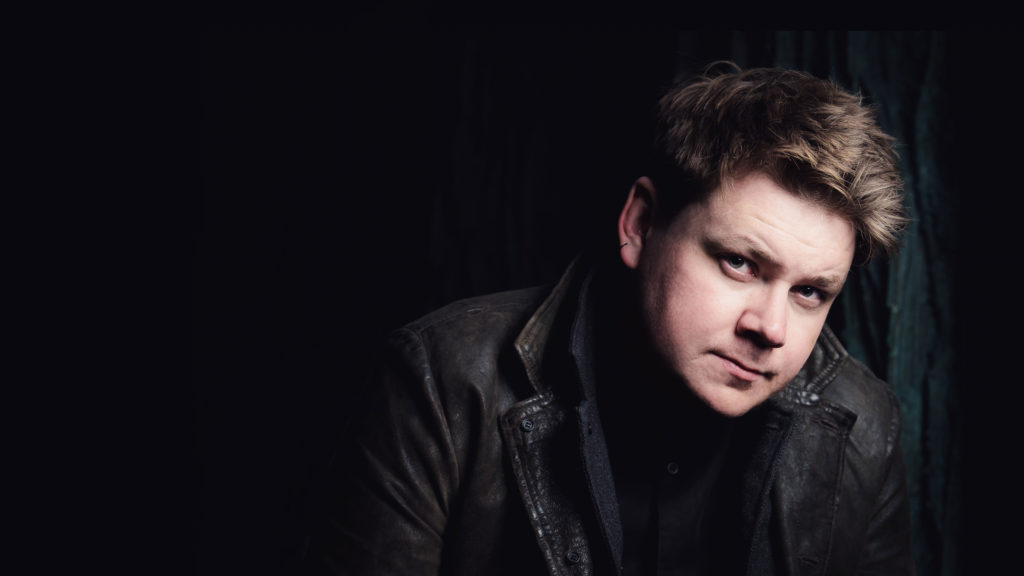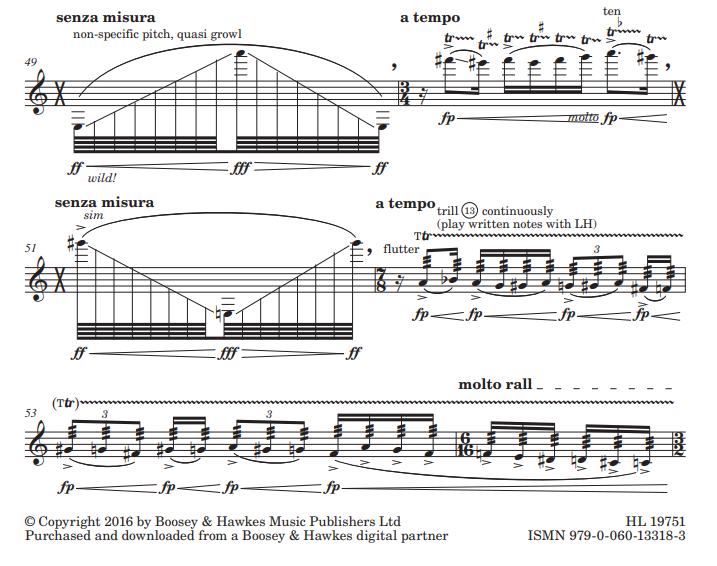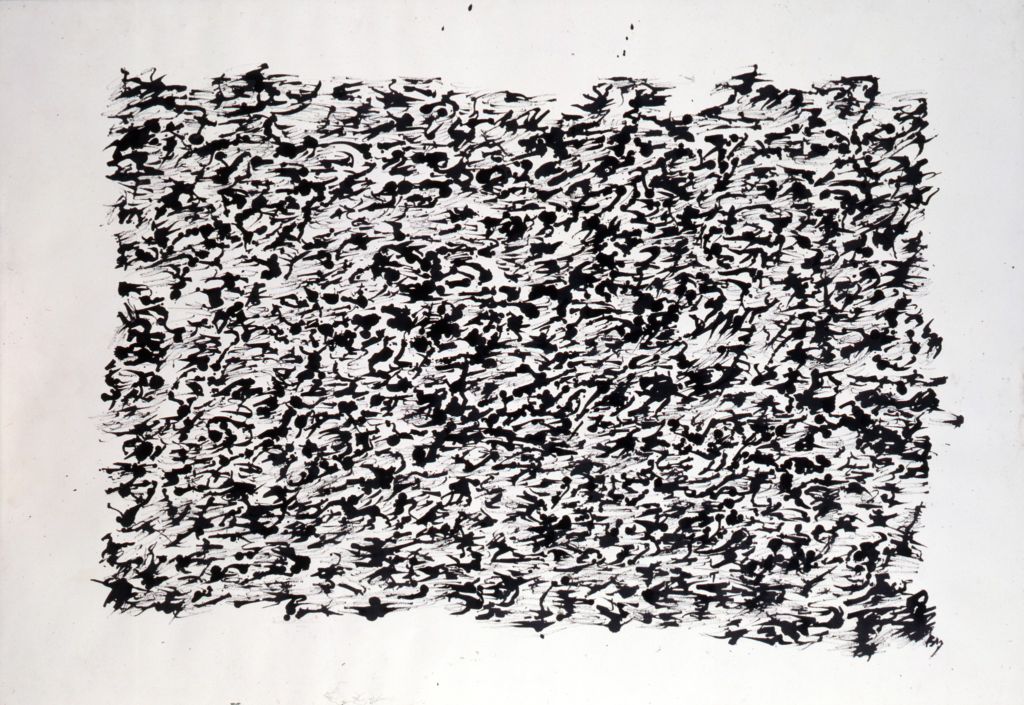An introduction to Mark Simpson’s Darkness Moves
Feature
On Sat 11 Dec, leading composer and clarinettist Mark Simpson performs a programme of clarinet and electronics/loops featuring world premieres, including Atma by Zoë Martlew and a new version of Simpson’s own piece, Darkness Moves, and contemporary classics by Steve Reich and Jonathan Harvey. Ahead of the concert, Benjamin Poore introduces Darkness Moves, which like many of the works in the programme, is shamanic, conjuring otherworldly forces and atavistic energies.

© Chelsey Browne
Darkness Moves for solo clarinet was first performed in 2016. For Kings Place Mark Simpson has collaborated with Phil Dawson – together they offer the world premiere of a new version with live electronics. It takes its title from an anthology of writings by Henri Michaux, the avant-garde poet and artist who would be one of the principle exponents of Tachisme, the European iteration of abstract expressionism. Tachisme would be characterised by the splashes and stains its name implies in French. Spread and spatter are also the means by which Darkness Moves moves.
This effect is achieved in part through the live electronics, which smear the live clarinet across the auditorium. It is also in the seeping and splashing of the musical material, whose arpeggiated figures and scales dilate and bloom. Sometimes the atmosphere is of one giddy elation; at other times it is gnawingly claustrophobic. Part of the piece’s movement, as the title implies, is through the different shades of anxiety, terror, excitement, and frenzy entailed in this outlandish and hallucinogenic musical world. “The poetry of Michaux is truly visceral”, Simpson writes in the score, “Bodies are contorted, dismembered, writhing…nightmarish images invite you to the very extremities of the human imagination. I wanted to try and capture the essence of this musically.”
It is a piece made of smudged sounds: congealed, glutinous, and grimy at the outset; looser and less viscous later on. “It’s the dirt and the slime that interested me”, Simpson tells me. The battery of extended techniques summon these timbres. There are breathy, whistling overtones and multiphonics that make hairs on the back of the neck stand tall; Simpson calls for a pitchless growl that traverses the instrument’s range; there is guttural singing alongside feral flutter-tonguing; the piece begins with an oil slick of glissandi.
The title evokes Michaux’s writings, but the piece might also put us in mind of his work as a visual artist. Michaux’s interest in calligraphic traditions met postwar abstraction. In combination these produced rhythmic, graphic works of remarkable intensity, mostly ink on paper, that bear the unmistakable imprint of the human hand. The score of Darkness Moves is visually striking itself. The fingering charts at the end echo Michaux’s cadential drawings; the piece’s wild gestures and guttering sounds leap off the page with the same immediacy.


https://www.tate.org.uk/art/artworks/michaux-untitled-chinese-ink-drawing-t00577
It sounds as wild as it looks. There are manic, skirling repetitions, particularly in the final section of the piece, which are never exactly the same. The piece has a cumulative force as well as an inventive dynamism, much as Michaux’s pen strokes do on paper. One section leads with the direction ‘improvise on this material, in similar patterns. Always fluid, no breaks.’
The energies of the work partly come from its recklessly improvisatory character. Darkness Moves, like many of the works in the programme, is shamanic, conjuring otherworldly forces and atavistic energies. By turns it channels a primal aliveness – the kind of thing Freudians would call Trieb, ‘drive’ – as well as cosmic feelings of transcendence and elevation. These qualities stem from Simpson’s reputation as a performer. Almost everyone I have spoken to recalls seeing his breathtaking improvised cadenza for Magnus Lindberg’s Clarinet Concerto – a piece whose performance preceded the composition of Darkness Moves, and provides a framework for it.
“You enter a different kind of state when you’re playing something like that…it’s elevated, an out-of-body experience”, he tells me. This sense of an altered state of consciousness is part of the delirium of Darkness Moves and a reflection of Michaux’s own experimentation with acid and mescaline. This hallucinogenic dimension of the work also comes from the use of live electronics, engineered by Phil Dawson, who has been Simpson’s collaborator for each work in the concert programme. Reprocessed effects, echoes, bumps and crackles encircle the audience. These sounds are uncanny and disorienting. For Simpson they add a crucial extra dimension to the piece: an “ethereal” quality that calls forth another world.
BENJAMIN POORE